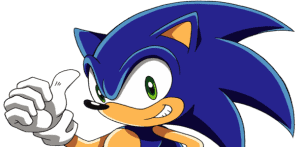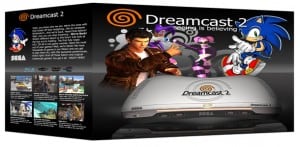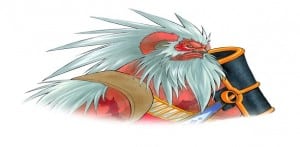I, like many others, have been spending the majority of my free time this week engrossed in the rich world of Ni No Kuni, in preparation for my full review; which I promise you is coming. For those who don’t know, Ni No Kuni: Wrath of The White Witch is a JRPG, which is short for Japanese role-playing game. While I’m sure most of you already know what an RPG is, there’s a specific reason why I’m spelling it out here. I’ve been thinking a lot lately about why I’m a gamer. I guess it’s because of all the recent attacks on this hobby I’m so passionate about, or perhaps because Ni No Kuni reminds me of what makes games so special to me. In any event, I wanted to share a personal story today, one that will give you a glimpse inside my mind and how I got to be the kind of gamer I am today.
I’ve been gaming for roughly 21 years now. That being said, it may surprise you to know that at the time of this article I’m only 23 years old. (I’m certain you’re capable of doing the math.) My first game was Super Mario World, and I used to spend countless hours collecting every coin and repeatedly capturing that blue Yoshi I loved so much. I was more than capable of beating the game, and even needed to help my Uncle get past a few level from time to time. This isn’t me throwing my gaming achievements in your face, I promise, the point is that I’m just about as familiar with video games as humanly possible. And in order to determine what makes me the gamer I am today, preferences and all, we need to take a hard look at my gaming timeline.
As far as consoles that I’ve owned, the list is as follows: Sega Genesis, Sega Dreamcast, GameCube, Xbox, and all three current gen consoles. (I’m betting you can tell at which point in the timeline I started making money and taking gaming seriously.) I plan on owning a Wii U as soon as I see a release date for Smash Bros. As you can see, there are some pretty major gaps there. The reason for that is I had a best a friend who owned a Nintendo 64, Sega Saturn, and PS2, on top of my uncle who owned an NES, SNES and Sega Master system. So, given how much time I spent with them, I had access to all the consoles and games I ever wanted. For the purposes of this article, and to spare you from the 100 lb. tome this piece would inevitably become, I’m going to focus on the consoles I owned and the games I’m most fond of.
As a child, you don’t really care too much about what games are about. Words like “narrative” and “characterization” or even “plot twist” hadn’t yet entered into my vocabulary. Games were simpler back during the time of the SNES and Genesis era anyway, so honestly I was probably just about as mature as my games. My Genesis memories consist of three games primarily: Sonic the Hedgehog, Streets of Rage 2, and Vectorman. I had about a dozen more games, but these were the three I always went back to. If you look at them, they’re a pretty balanced mix of genres. We have the straight 2-D platformer in Sonic, the forever classic beat ‘em up in Streets of Rage 2, and the “shooter”-platforming hybrid of Vectorman. It’s a toss-up whether I spent spent the most time with Steets of Rage 2 or Sonic. Either way, from this list of games we can see exactly where I was at, both as a person, and as a gamer. I loved the visceral, immediate response of pressing a button and beating down a baddie in Streets of Rage 2. It was the perfect combination of fun and challenging. (For reference, I’m between the ages of 3-7 at this point.) I loved the cool-looking enemies and bosses, the unique characters to choose from, the small bits of dialogue/screaming during special attacks or after being knocked down, and especially the variety of stage backdrops. The game had a certain flare to it, and I was totally mesmerized.
Then there was Sonic. The “Blue Dude with a ‘tude”. He hit the ground running and, if he had his way, wouldn’t stop for anything. I totally bought into Sonic’s personality and attitude, even though everything I knew about him came from the commercials and animated Saturday Morning series, not the actual game. I loved letting Sonic stand idle and watching him grow impatient. Again, this game also featured great character designs, interesting boss fights (albeit they were all Dr. Robotnik/Eggman, he at least had different weapons and vehicles) and a great variety in landscapes. From an early age, it seems I had a taste for variety and imaginative design.

Behind that smile, he’s really just wishing you’ll hurry up and bring him a chili cheese dog
Vecorman was probably the first time I remember paying attention and following along with the “story” of a game. It wasn’t more than a few pages of text at the beginning and end, but still, it was the first time in my gaming life that I understood that stakes were involved. The first time I started to see “the hero’s journey” instead of just “look at the screen, press these buttons to make the characters move, and just keep moving to the right.” All of a sudden I was making a difference in this story; my actions would either doom or save a planet. Or in Vectorman’s case, I guess I was just helping him get rid of some pollution monster. Captain Planet, much? Point is, I felt like my playing the game actually mattered, and that was a pretty big moment.
Flash forward to the Sega Dreamcast. I bought the console at release that came bundled with Sonic Adventure, an extra controller, and a Dreamcast t-shirt that to this day I’m pretty sure my old man wears every time he mows the lawn. I have a ridiculous collection of Dreamcast games, at least for a small-town kid with no allowance at the time. My collection is somewhere between the 40-50 mark. The Dreamcast era was my golden age, and the time I most attribute to shaping me into the gamer I’ve become. I will defend this system as “the best ever” with my dying breathe, and not a day goes by I don’t shout out loud, “The Dreamcast 2 will happen.” It’s basically my mantra, and probably the most significant reason I get up in the morning. So what made the Dreamcast such an integral part of my gaming life? I’d say it’s based on two factors: Timing (as in when it released in relation to my maturity level) and the game catalogue. The Dreamcast was the first time I was introduced to every genre gaming had to offer. It was really my first experience with racing (Crazy Taxi), fighting (Soul Calibur), RPG (Skies of Arcadia, Grandia II), Online games (Phantasy Star Online), and more traditional shooters (Tomb Raider, Fur Fighters… shut up.) It was also when I was just developing a sense of narrative and began appreciating movies and shows that featured characters with strong emotional cores.

Photo Courtesy: DeviantArt user sonicadventurer
Of all the incredible games the Dreamcast had to offer, it’s still easy for me to point to one game in particular that literally changed my life. I’m talking about the one game that took gaming as a hobby, and turned it into a passion. The reason I’m getting paid to tell you this story right now on a gaming site because I got a degree in journalism specifically so I could help people feel the way I feel and understand the beauty of video games, that kind of life-changing experience. That game was Grandia II. Never heard of it? That’s okay. Don’t like it? Get the F*** out of my blogging space! Just kidding, to each their own. Before I got started writing this piece, I had to sit down and really think about what separated Grandia from the rest of the pack. It took some time, but I had to narrow down exactly what made this game resonate so strong and stay with me so long. The best I can tell is that it was simply a perfect storm. The game itself, as well as where I was at in life when I first played the game.
According to the Wikipedia page, Grandia II released in North America on December 6, 2000. That seems about right to me, because I was 11 when I got that and Skies of Arcadia for Christmas. (I know, best Christmas ever.) So here I was, not yet a teenager, and an avid consumer of video game media. I’d played all kinds of games at this point simply because they were fun. And then, out of nowhere, here comes this game with incredible characters, amazing graphics, and a story that literally made me experience every emotion my body was capable of. (Yes… even that one. If you must know, it was because of Millenia.) I was so captivated by the personalities and story of this game that I could not wait to get home from school and spend my entire weekend lost in this amazing world. (No gaming on weekdays. House rules.) The combat was/is technically turn-based, but back then I think it was called “active turn-based” solely because there was an action meter on top telling you when enemies were going to attack, and what move they were using; the strategy here being that you could “cancel” enemy attacks with certain special moves of your own. It was also the first game for me where characters would be fighting in the background of the battle arena while you were choosing your team’s actions. The game seemed so alive; even when I was just trying to decide which move to use, my party was out there clashing weapons with secondary enemies.
Then there was the story. I won’t spoil anything because I demand you find a way to play this game, but I was completely engrossed in Ryudo’s journey across the world while protecting his traveling companion Elena. My favorite character though had to be Mareg, a beast-man who sports some sort of lion-mane. Mareg was voiced by Peter Lurie, whom many may know as the voice of Sabertooth in Wolverine and the X-Men/Ultimate Spider-Man or, in the gaming world, Vulcan Raven from Metal Gear Solid. He had the most amazing move set and you could equip him with some of the best gear in the game. But more than that, he was the classic “monster with a tender heart” character-type, and his caring for other-party-member Tio was so wonderfully displayed throughout the game. For those who’ve played the game, you can probably guess the exact story point at which I cried for the first time. In my defense, I only cried twice during the course of the game: Once at a specific plot point and then again when the credits started rolling because I didn’t want the game to end.

He ain’t handsome, but he’s a great guy. (Not shown: His giant war axe.)
So, great characters, solid story, varied locations, and beautiful graphics, sounds like most RPGs, right? I guess what separated Grandia II from the rest of the pack was that, for me, it was the first time I genuinely connected to a game. This story became about more than just Ryudo and his gang having an adventure. It became about how games can have an emotional impact on a person, and that these stories can engage and immerse us in their worlds in ways absolutely no other entertainment medium will ever come close. I felt like a part of the action in Grandia. My decisions were the ones that brought these people together, and we shared experiences simultaneously. Grandia II featured these “campfire” moments throughout various dungeon expeditions where you could either just go to sleep or stay up and make the characters talk to each other. I used to milk those conversations as long as possible, and they ended up being some of my favorite scenes in the game. Not because the battles were dull or anything, far from it, but because I simply began enjoying the company of these characters. And these tender moments during down time from the action, when these people were just getting to know each other, those were the moments I felt most connected to them, and their fictional world.
From Grandia II onward, RPGs have been my favorite game genre, bar none. I absolutely adore getting lost in these massive worlds teeming with exotic locales and endless wonders to explore. But, even crazier than that, the characters and personalities of Grandia made such a profound impact on me that I still carry the spirits of those characters with me today. I take a little of Ryudo’s courage every time I have to face a giant boss at the end of a dungeon. I can’t help but share Mareg’s compassion when deciding to either “rescue” or “harvest” the Little Sisters in BioShock. (I to this day can’t “harvest” even a single one just to know what it looks like.) I’m foolishly attracted to any red head who has a sassy remark in response to anything I say. (Millenia might not be the only reason for that, but that’s another story.) Bottom line, this is “the one game” that took the epiphany bat and beat me over the head with it. I haven’t just been a core gamer since Grandia, I’ve been absolutely enamored by the feats this industry is capable of accomplishing. This is the game that made me realize the sky’s the limit, and that video games can be so much more than the children’s toys/killer-breeding machines mainstream media makes it out to be.
So, there’s my story, humble beginnings and all. If you stayed with me all this while, and I mean this, God bless you. You’ve either got way too much time to kill, or you’re as passionate about games as I am. Whatever the case, I thank you for taking the time to hear my story, and I encourage you to share a few of your own in the comments. Everybody has that “one game” that made an impact on them, what was yours? Did it affect you as profoundly as Grandia II did for me, or was it simply a realization that you loved video games? If you’d seriously like to share your whole story with the gaming community, check out HAWP star Ashly Burch’s How Games Saved My Life. It’s filled with testimonials from gamers just looking to share their passion and give thanks to the wonderful games that made a difference in their lives. Alright, that’s more than enough out of me. I hope you’ll tune into future stories, although they won’t all be as reflective as this. Until next time, keep gaming folks!



